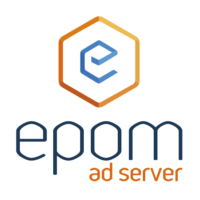Epom Issues Omnibus Infographic on State of Programmatic In-Housing 2020
by on 3rd Nov 2020 in News


Programmatic advertising is seeing a drastic shift. Scale and efficiency in targeting have resulted in a boom over the past ten years, and with improved user-focused platforms, many organisations are now taking their advertising in-house. In EPOM's State of Programmatic In-housing Infographic, we take a look at what is driving this shift and how it is changing businesses' approaches to in-house advertising.
Wind the clocks back ten years and only a small percentage of businesses were handling their own programmatic ads. Now in 2020, 69% of advertisers have some extent of their programmatic operations working in-house. What sparked this change and how are advertisers picturing their future? EPOM’s infographic takes a deep dive into the current state and future plans for in-house programmatic advertising.
Key Takeaways From Epom’s State of Programmatic In-housing Infographics
With 84% of organisations wanting more control over their advertising, and over half finding most ad agencies untrustworthy, in-house programmatic is a logical next step for many businesses.
It’s not only a control issue that many businesses are facing. 44% of those surveyed expect that bringing operations in-house will increase their ROI. The same number also thinks it can benefit them in improving their ad campaign optimisation due to more open data access, and bring more clarity to their audience targeting.
Key stats:
- 69% of US advertisers have some part of their programmatic advertising in-house
- The most delegated part of programmatic operations is building technology, with 34% of advertiser delegating this responsibility
- The least delegated part of programmatic advertising is creating a KPI framework, with only 11% of advertisers delegating this responsibility
- 69% of advertisers have part of or all of their operations in-house and will continue with, or expand in-house operations in future
In the past, obstacles such as lack of technical knowledge and the high cost of software development were substantial barriers to overcome. Creating a DSP from scratch is still not a budget-friendly option for many with costs reaching up around $2.5m (£1.9m). Most brands are simply not ready to take on this sum.
So how is it that so many brands are switching to in-house? Well, many are looking to other options such as white-label DSPs. Purchasing a ready-made solution allows brands to incorporate their own branding after purchase and customise UI and some features according to their needs, but does not require the upfront investment of a built-from-scratch solution.
Not needing any ad tech knowledge is another big bonus. Many smaller businesses simply don’t have the in-house team with skills to develop a custom solution or the time needed for development.
What was once a buzzword is becoming common practice. In only ten years programmatic has become an in-house process for the majority of businesses. As ad technologies advance, costs come down, and pre-built software solutions become more readily available, the future is looking bright for programmatic ads.
Learn more about the programmatic in-housing by checking out the full EPOM infographic here.
Ad TechAdvertisingBrand SafetyProgrammaticTechnology








Follow ExchangeWire